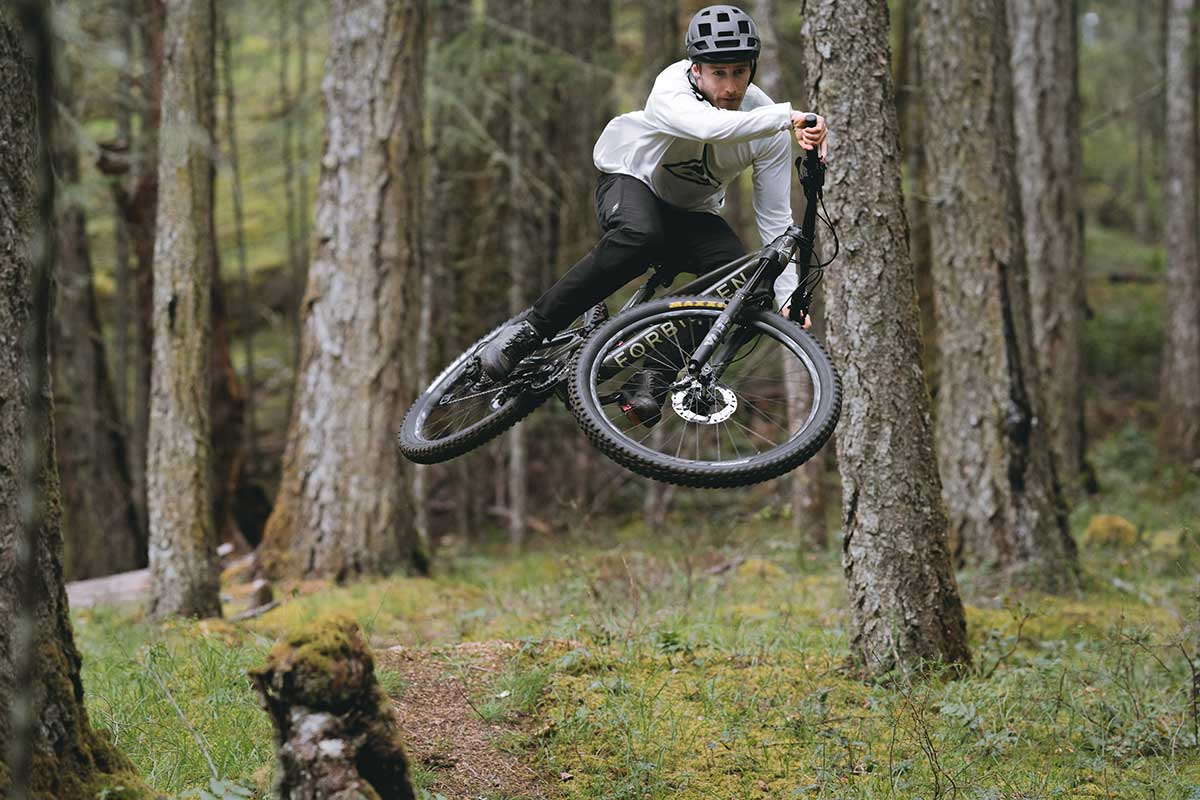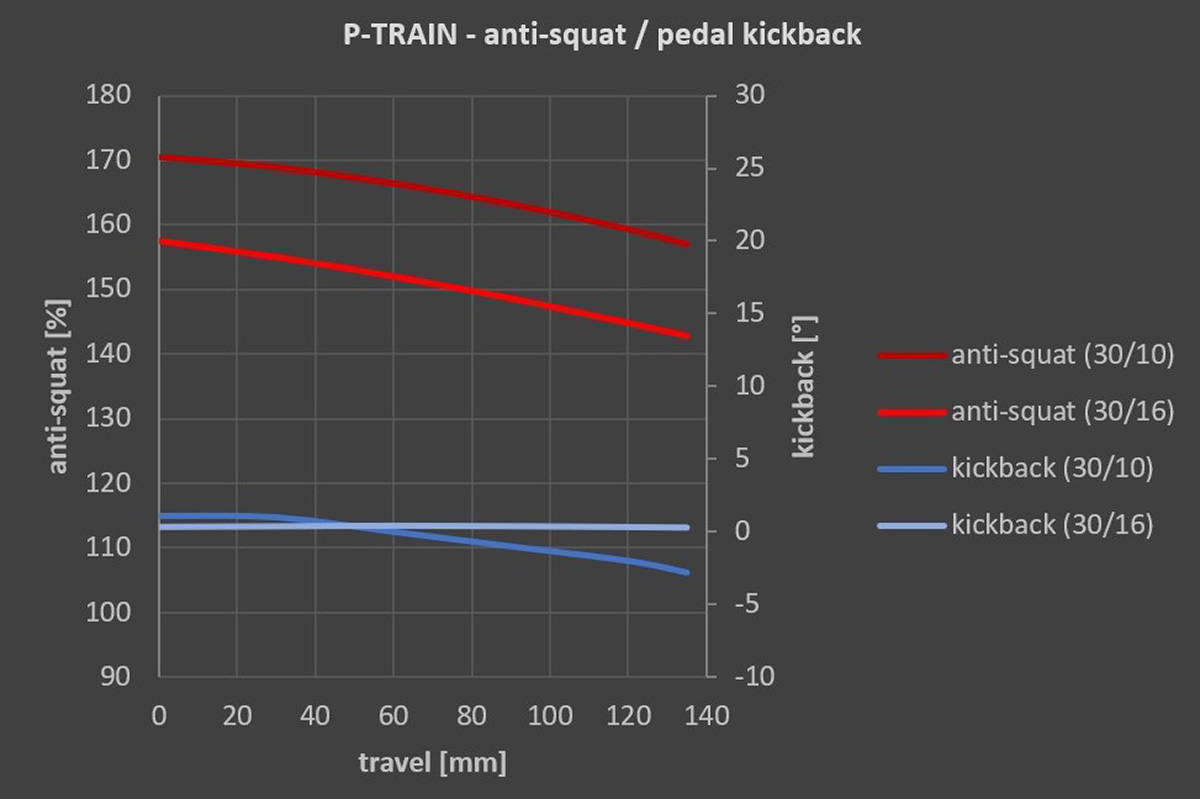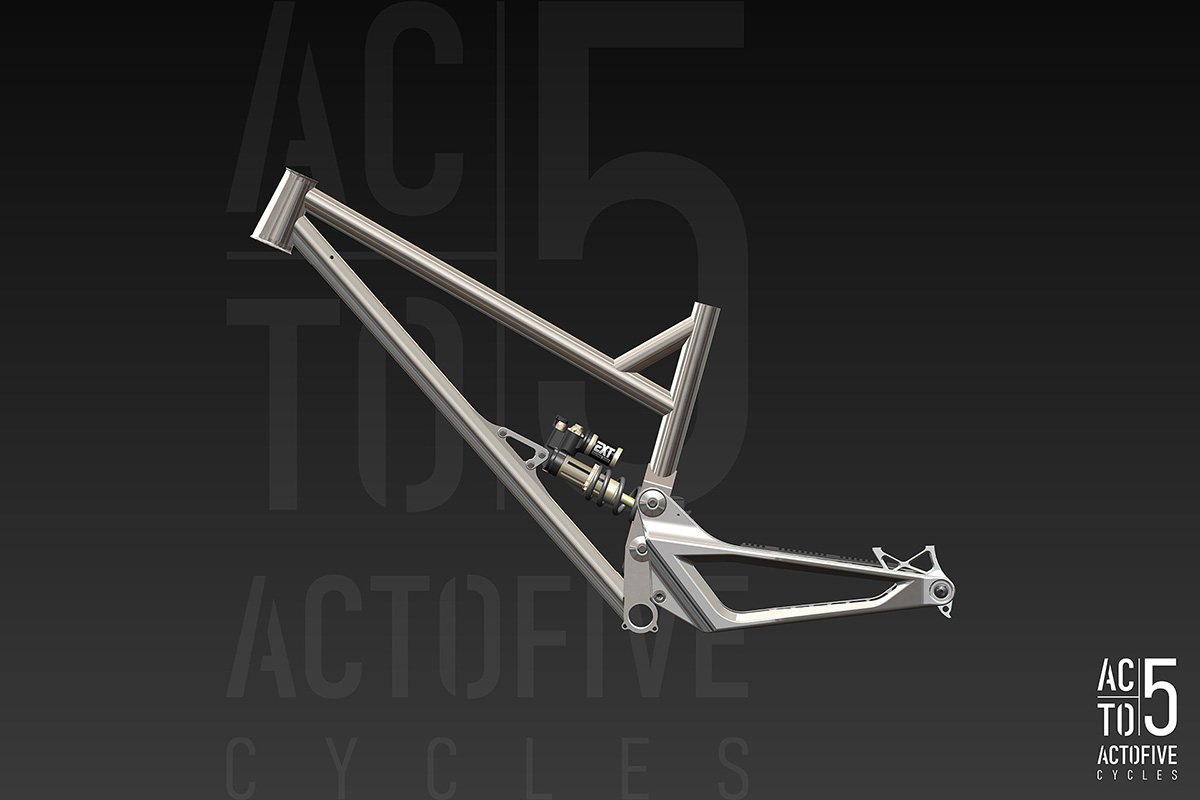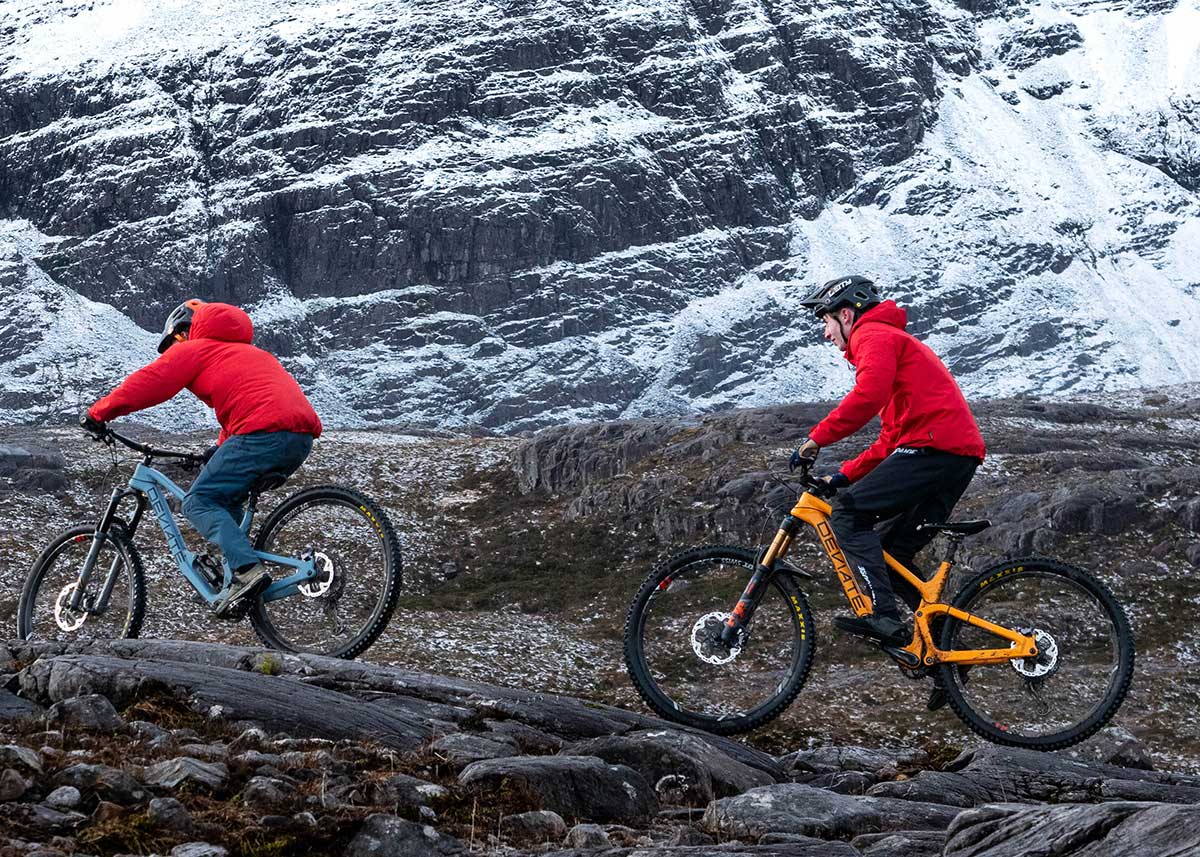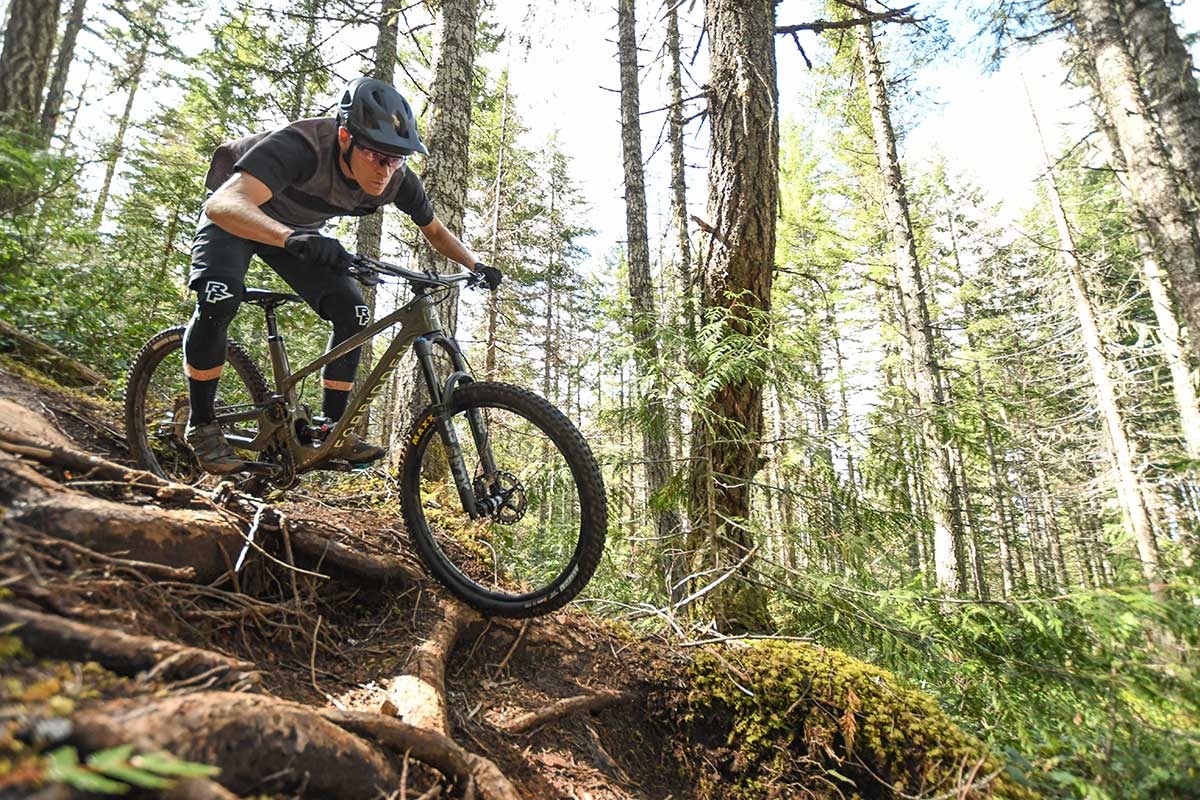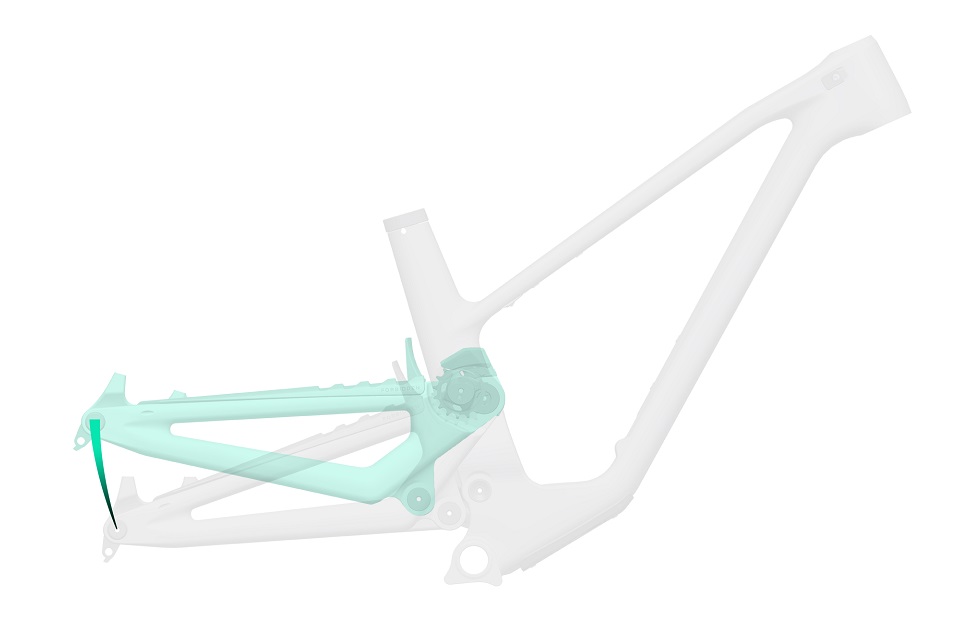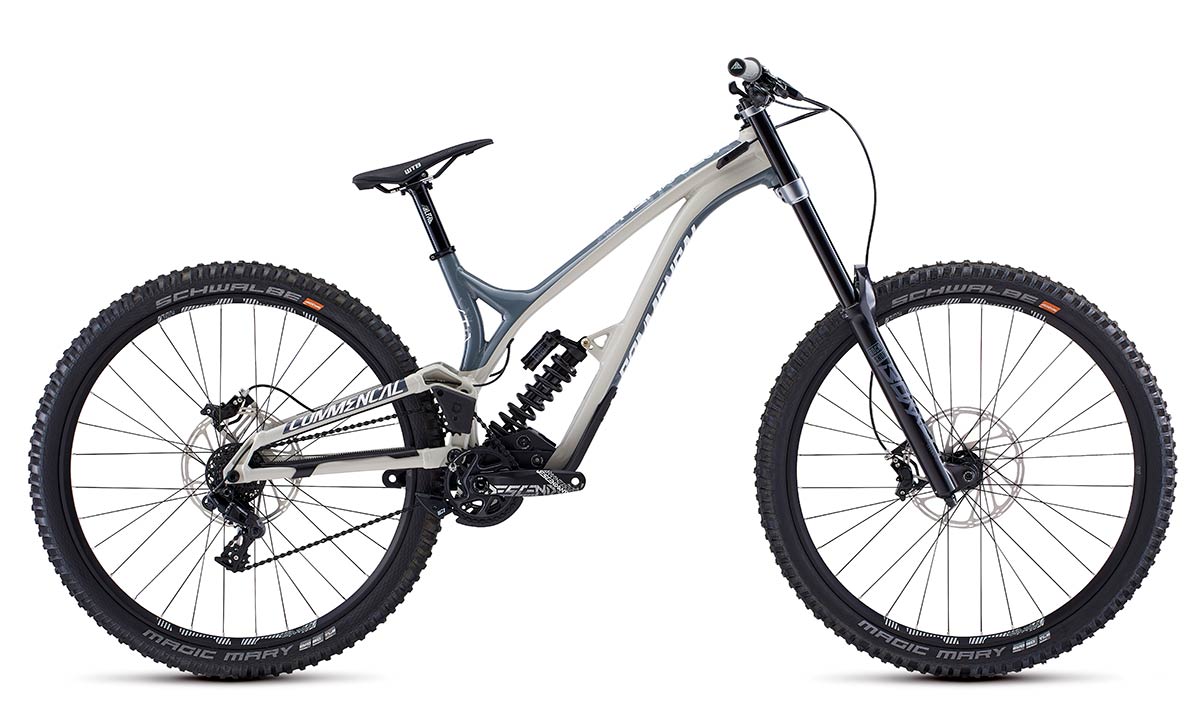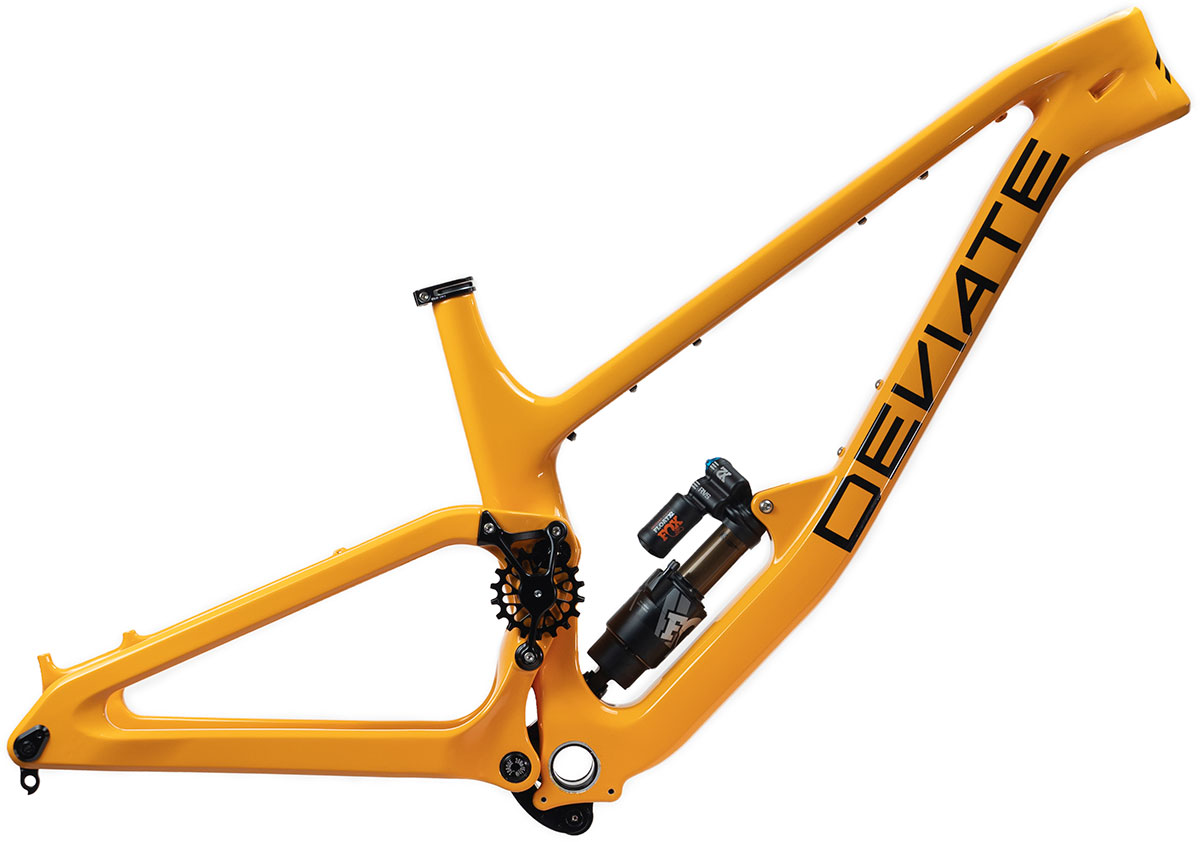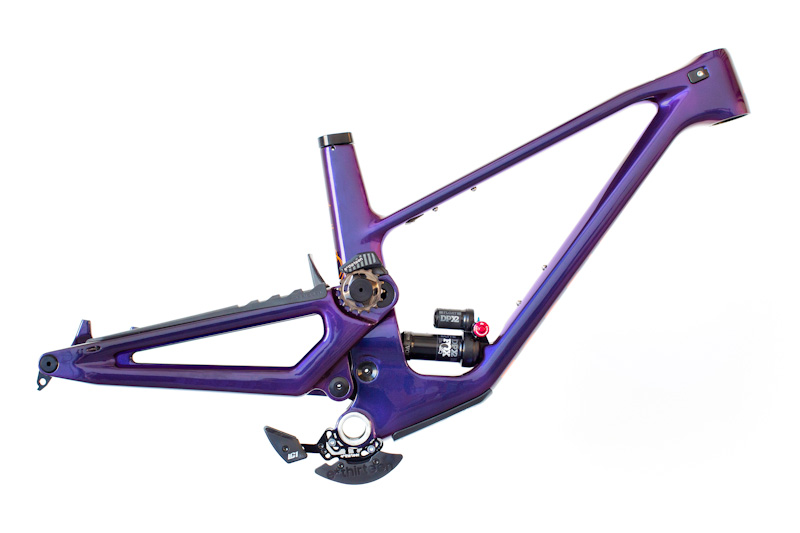We know, there’s no such thing as a stupid question. But there are some questions you might not want to ask your local shop or riding buddies. AASQ is our weekly series where we get to the bottom of your questions – serious or otherwise. This one deals with high pivot suspension tech.
Rearward axle path? Idler pulleys? What is this high pivot witchcraft? We pose technical questions to the experts at Deviate Cycles, Forbidden Bike Co, Starling Cycles, Commencal and Actofive, in the hope of ironing out some common misconceptions around this lesser-spotted suspension platform.
What is pedal kickback and how does a high pivot eliminate it?
DEVIATE CYCLES: In most suspension systems, as the shock is compressed there is an increase in the distance between the front and rear sprockets as the bike goes through its travel. This leads to what we term “chain growth” on the upper chain line.
The chain cannot stretch – so this force is transferred to the sprockets and if the chain is under tension (i.e. you are pedaling) the only place for the force to go is into a rotation of the front sprocket moving cranks and pedals backwards. This is termed pedal kickback and is a force that is transferred to your legs as you pedal through rough terrain.
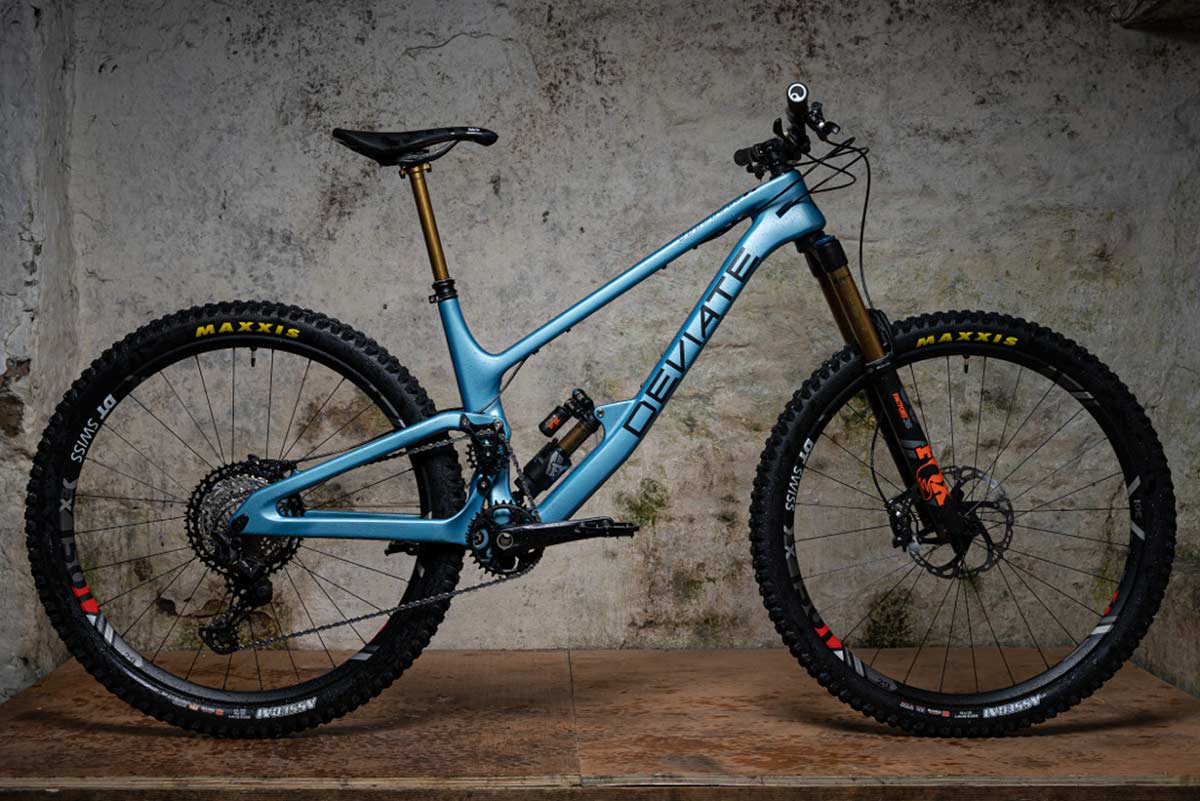
A high pivot point with a conventional drivetrain actually increases pedal kickback as moving the pivot point further away from the front sprocket increases chain growth as suspension compresses.
This is where the idler comes in. Typically high pivot point suspension would have more chain growth without an idler, so the addition of an idler effectively moves the front sprocket to a position which eliminates chain growth and therefore eliminates pedal kickback.
FORBIDDEN BIKE CO: Pedal kickback is a negative trait caused by chain growth in a suspension system. When the freehub is engaged the chain growth in the system causes the crank to rotate backwards as the suspension compresses.
It’s important to note that this will only happen when the freehub is engaged, which is why excessive pedal feedback is often noticed while climbing technical, rooty or rocky climbs. As you are pedaling and the bike encounters an obstacle, in order for the suspension to react and absorb said obstacle the pedaling cadence will be interrupted.
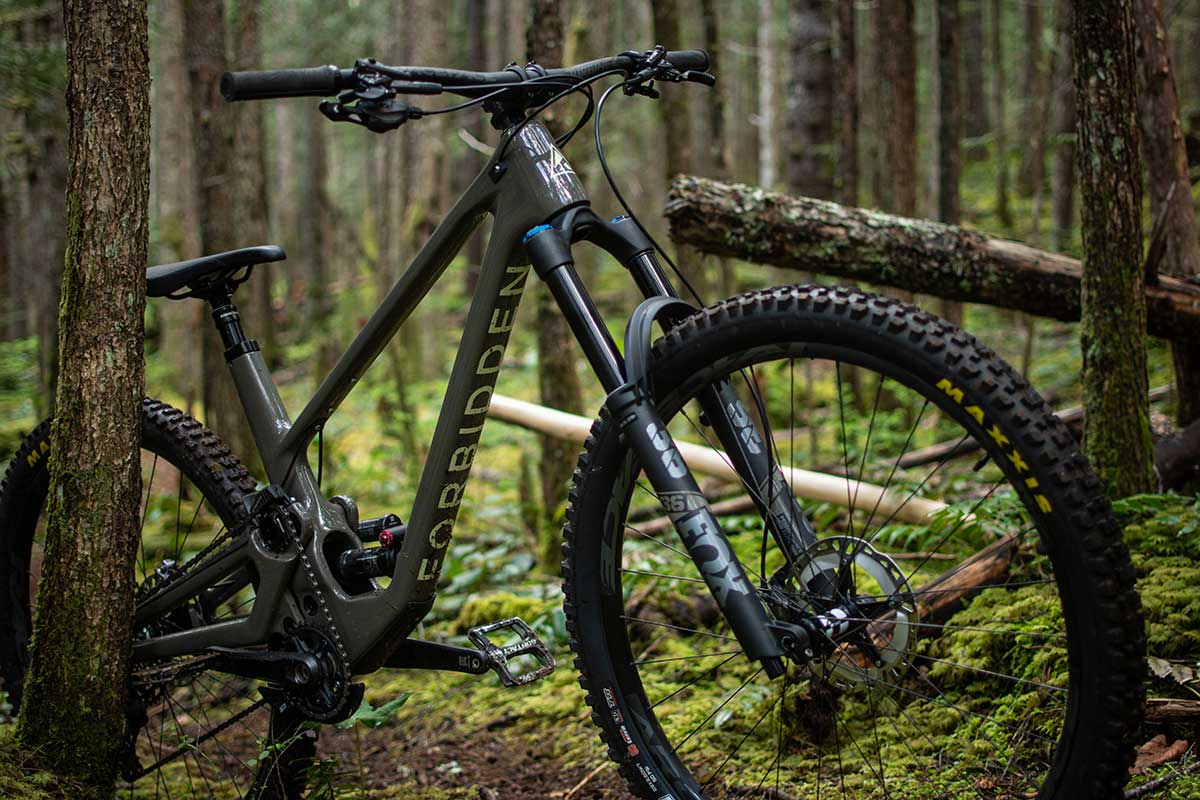
While descending the bike is (for the majority of the time) freewheeling, i.e. the freehub is not engaged and the suspension is free to absorb impacts without the chain forces impeding it.
However, when the bike is slowing down, the freehub can engage and when it does these chain forces try to stop the suspension from doing its job. That is, unless the cranks rotate backwards, something that is difficult to achieve during a braking situation when the rider’s weight is being pushed through the pedals.
If the cranks do move this can be disconcerting for the rider – it can also cause flat pedal riders to lose their footing. If on the other hand the cranks do not move the bike essentially becomes a hardtail.
None of this is ideal and it is, to some extent, present on every type of suspension design on the market today. And one last point; it is only made worse by our fascination with close engagement freehubs.
How does a high pivot eliminate pedal kickback? It doesn’t. It is the idler pulley that can be used to eliminate chain growth in the system and therefore pedal kickback. On our Trifecta suspension design, we use the idler pulley position to fine-tune the amount of anti-squat in the system.
Anti-squat is the reason why chain growth is deemed desirable in most designs. The beauty of a high pivot design is that we do not need anywhere near the same amount of chain growth to achieve desirable pedaling characteristics; the amount of chain growth (and therefore pedal kickback) in our system is so low it is negligible.
STARLING CYCLES: Having just spent several hours trying to get my head around what pedal kickback is, I’m inclined not to comment. Descriptions are either overly simplistic, or overly complicated and poorly presented.
Certainly, I wouldn’t have signed off any of the calculations I have seen if they were presented to me in my previous life as an aerospace engineer. If you disagree, I’m happy to get my red pen out and mark up your own efforts!! One day, I’ll find the time to do a proper calculation file on the subject…
In the most simplistic terms, as the suspension moves through its travel, the change in length of the upper portion of the chain (the part that is under load) causes changes in the force within that chain. The changes in force translate into forces acting in the cranks and pedals. Thus termed pedal kickback.

The offset of the upper chain from the suspension pivot is one factor contributing to pedal kickback. Similarly, at the cassette, the chain is offset from the dropout, so suspension movement adds to chain forces.
High pivot bikes in and of themselves do not help to reduce pedal kickback. In fact, the pivot is further from the chain line, so they make it worse. Because of this, high pivot bikes tend to need an idler to counteract these forces. The idler essentially moves the chain line to be closer to the pivot, reducing the forces.
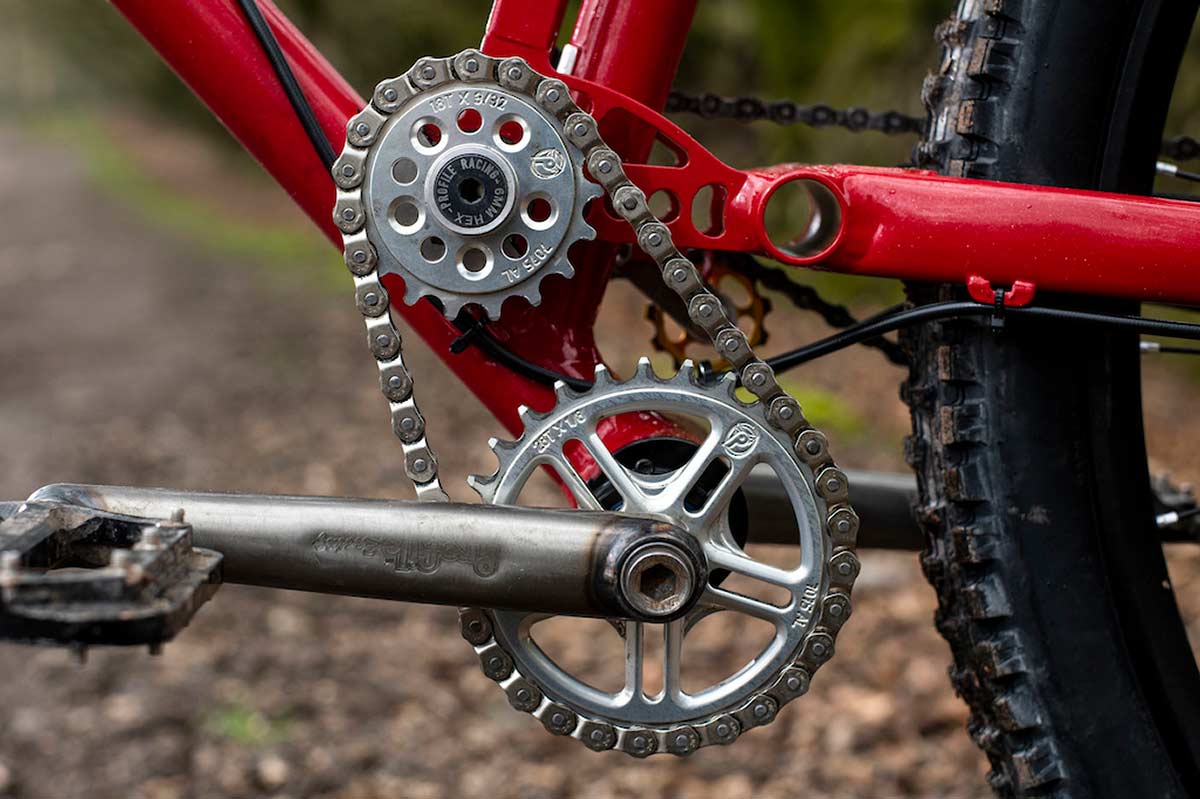
On the Starling high pivot bikes, we use a Jack Shaft solution. Pedal kickback is low on Jackshaft bikes but not zero as the upper chain line is offset from the pivot/dropout. But, there is no chain growth, so when pedaling forces are removed, the suspension is free to move. Bikes with chain growth need to overcome the tension generated by the derailleur.
COMMENCAL: Pedal Kickback comes from chain growth induced by the suspension being compressed. As the main pivot is not concentric to the bottom bracket, the chain wants to extend. This is of course is not possible and the crank set tends to rotate backwards. This rotation provides pedal kickback.

A high pivot doesn’t eliminate it. In fact, the contrary is true. This is why we use an idler to avoid too much kickback. This allows us to tune the chain tension effects on the bike the way we want.
ACTOFIVE: The further the main pivot is distanced from the bottom bracket (BB), the more the length between BB and rear axle increases during suspension travel. This causes an opposite chain hoist counteracting to the suspension – noticed as pedal kickback.
For conventional suspension concepts, a certain amount of the opposite chain hoist is necessary for creating a neutral and climbing-efficient chassis.
The idler pulley of the high pivot eliminates the pedal kickback by leading the chain nearer to the pivot point. Because of the force that the pulley initiates into the rear end (on the condition that the pulley is mounted at the rear end), the high pivot balances between a very high anti-squat value and a minimal pedal kickback value.
Is descending on a high pivot bike similar in ride feel to descending on a normal full suspension bike with no chain? If not, how is it different?
DEVIATE CYCLES: Riding chain-less on any bike eliminates chain interactions with the pedals, so logic dictates that riding chain-less removes pedal kickback. However, pedal kickback can only occur when the chain is loaded so it is a matter for further debate and proof if pedal kickback even occurs on any bike whilst coasting downhill.
Theoretically, it would not in most situations, but as with anything on a mountain bike it is a dynamic system with lots of variables. Therefore, we’ll promptly close that can of worms, resting assured that zero pedal kickback on a high pivot point platform is certainly an advantage whilst pedaling through rough terrain.

The main advantage of the high pivot point suspension, when descending, is the rearward axle path. This means the rear wheel moves with the impact, especially useful when faced with square-edged hits. A rearward axle path really helps the bike maintain momentum over rough terrain as it doesn’t hook up on impacts.
So, in this regard, no, removing the chain does not achieve a rearward axle path. It’s a common myth that removing your chain actually helps improve the suspension dynamics.
FORBIDDEN BIKE CO: Descending on a bike with an idler pulley is similar to riding chainless in the situations described in our answer to question 1, i.e. the suspension is now able to react and absorb impacts ALL of the time. That is not necessarily a trait of a high pivot, but as all high pivot designs usually use an idler pulley I am just being pedantic here.
The big difference between a high pivot design and other ‘normal’ designs is the rearward axle path. A rearward axle path allows the bike’s rear wheel to move in a similar direction to that of the force vector of the impacts it is being subjected to. This allows the bike to maintain its momentum through rough terrain.
Some ‘normal’ designs talk of having a rearward axle path, but they are usually in the region of 3-6 mm of rearward movement (along the horizontal) before moving forward for the rest of the travel. Our Trifecta design on the Druid exhibits a fully rearward path of 26 mm (horizontal) in comparison.
STARLING CYCLES: There are two commonly understood benefits of high pivot bikes. The first is that the suspension movement initially moves the rear wheel backwards, until it is at the same height as the pivot relative to the axles, then it moves up and forwards.

The thinking is that the backwards curve makes the bike get over bumps better. This is a real effect, but realistically, the value of the reduction in force to move the wheel is small.
The second benefit of a high pivot is again linked to the initial wheel movement being backwards. This backwards movement helps reduce the shortening impact of the wheelbase of slack forks. But, unless you have a super high pivot, the wheelbase will still shorten as both front and rear suspension compresses.

Neither of these benefits can be replicated by riding a ‘low pivot’ bike without a chain.
COMMENCAL: It depends on the idler location. It can be very similar to a bike without a chain but this is not always the case. In our case, we use a small amount of chain tension to generate better dynamism but this is nowhere close to the amount of kickback experienced on a more regular bike.
ACTOFIVE: The opposite chain hoist of a conventional bike with high or medium pedal kickback counteracts the rear suspension and lowers the sensitivity.
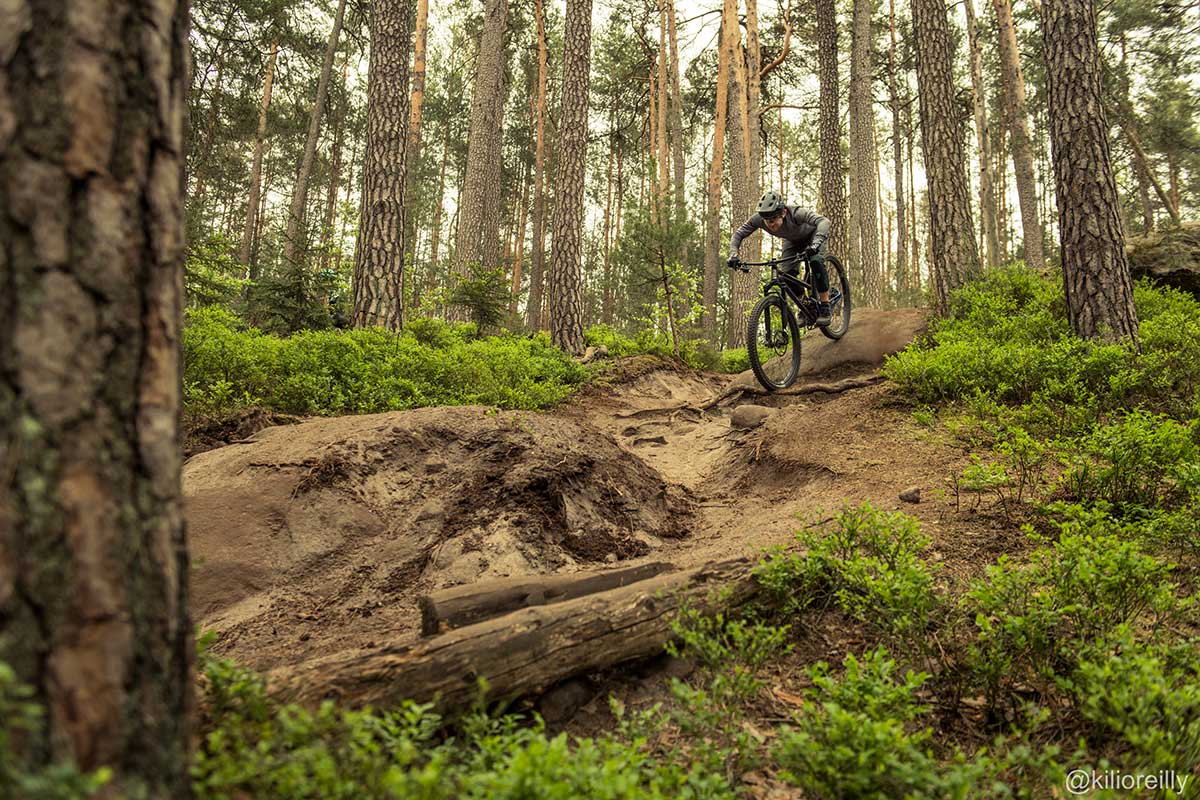
The response behaviour of a high pivot is theoretically close to a conventional bike with no chain.
Does the drivetrain wear faster, at the same rate, or last longer on a high pivot bike than a bike with a traditional chain line?
DEVIATE CYCLES: For our design we have found it wears at a very similar rate to a conventional drivetrain.
FORBIDDEN BIKE CO: In our experience, with correct maintenance, a drivetrain will wear at a similar rate on a bike with an idler pulley to that of a bike without. It is the idler pulley itself that can see somewhat higher wear rates and we are constantly looking at ways to improve this aspect of our bikes.
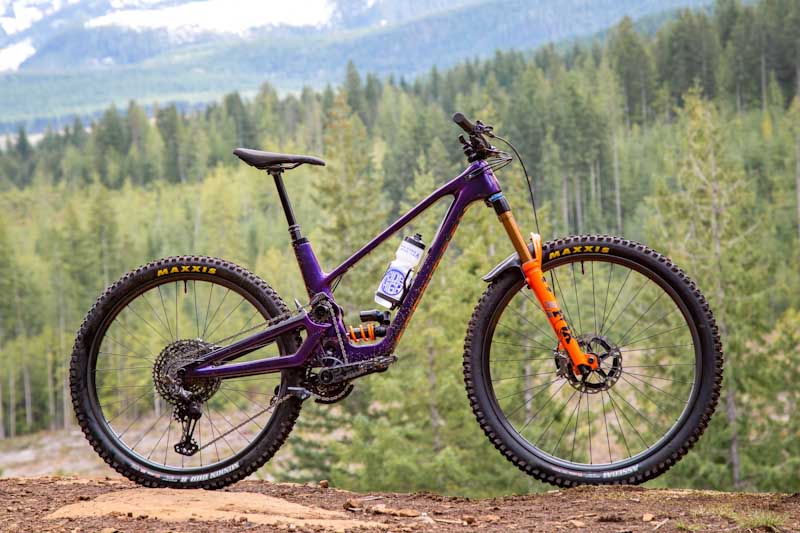
STARLING CYCLES: On high pivot bikes with idlers, you’ve pretty much got a conventional drivetrain with an extra idler cog. I doubt the drivetrain wears any quicker. More links means your chain will stretch more in length, but as a percentage stretch (like on my Park chain checker) it is the same as anything!
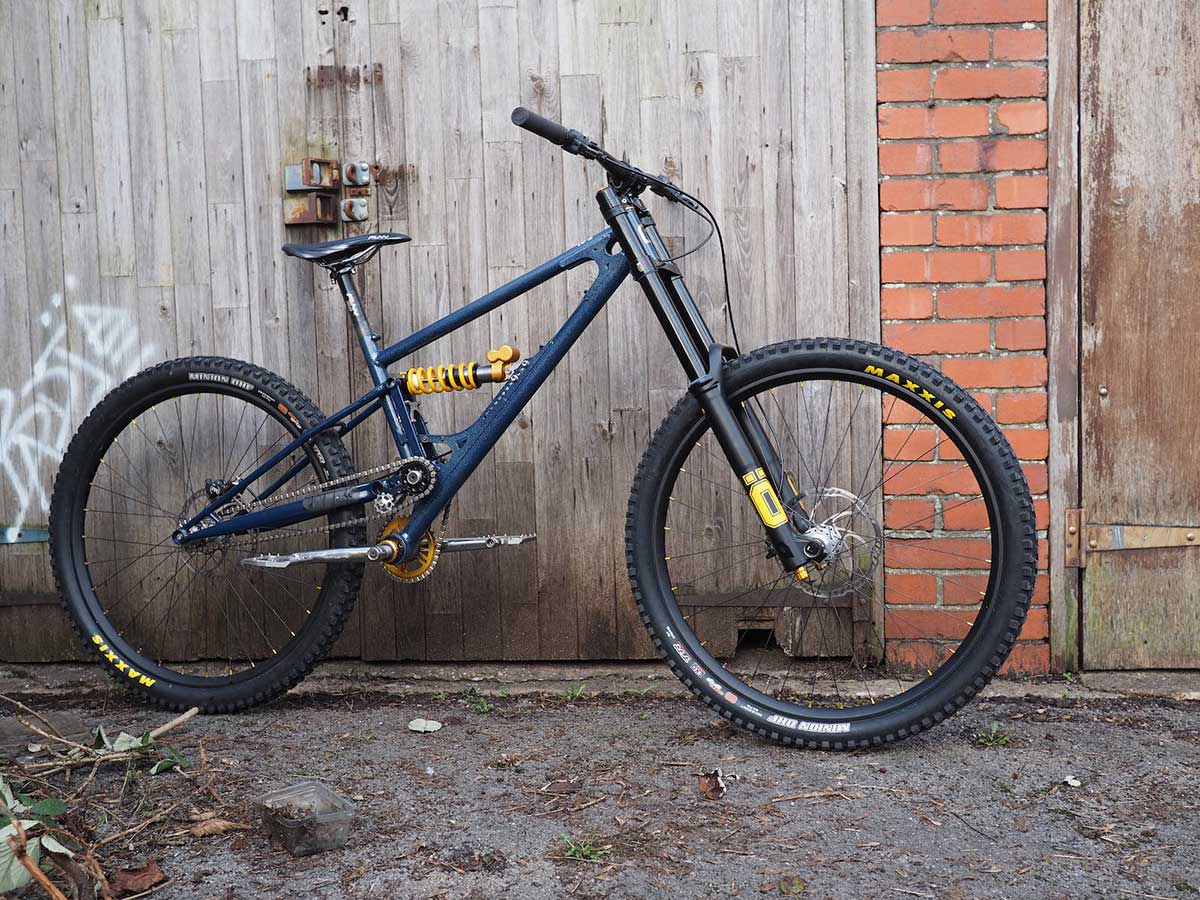
Starling bikes use a Jack shaft system. The short drive train runs in a straight line and is a solid single-speed chain, so could last a lifetime!

The same could be said of my Sturn DH bike. On the Staer geared bike, there’s no chain growth, so the mech is under less strain. But, it does have a few more drivetrain bearings that add a little bit of drag and more parts to wear. Some gains and some losses…
COMMENCAL: We haven’t experienced faster wear. This is very similar to a regular bike design.
ACTOFIVE: The chain ring has the same wear like traditional chain lines. In general, because of the chain elongation, only the first few teeth ensure the force transmission.
Other parts of the drivetrain are not affected with a faster wear, except for the idler pulley. Due to the small number of teeth, it wears relatively fast. For every chainring, you’ll likely wear out 2-3 idler pulleys.
How high does the “high pivot” need to be for optimal suspension performance?
DEVIATE CYCLES: Like most good things – there is such a thing as too much. While for big square-edge hits generally the higher the pivot point the better, as it allows even more momentum to be conserved with a more rearward axle path. However, if the pivot is too high the bike “folds” and the geometry can change drastically. The key is a balance.
FORBIDDEN BIKE CO: That will depend on the desired axle path. In simplistic terms the higher the pivot the more rearward the axle path.
STARLING CYCLES: ‘Optimal’ is a word only used in marketing! All bike designers will know that we are playing with a whole load of compromises.

The high pivot Starling bikes use this configuration to allow the use of a Jack Shaft design that gives a chain growth free supple suspension and allows the Sturn to be run single-speed!
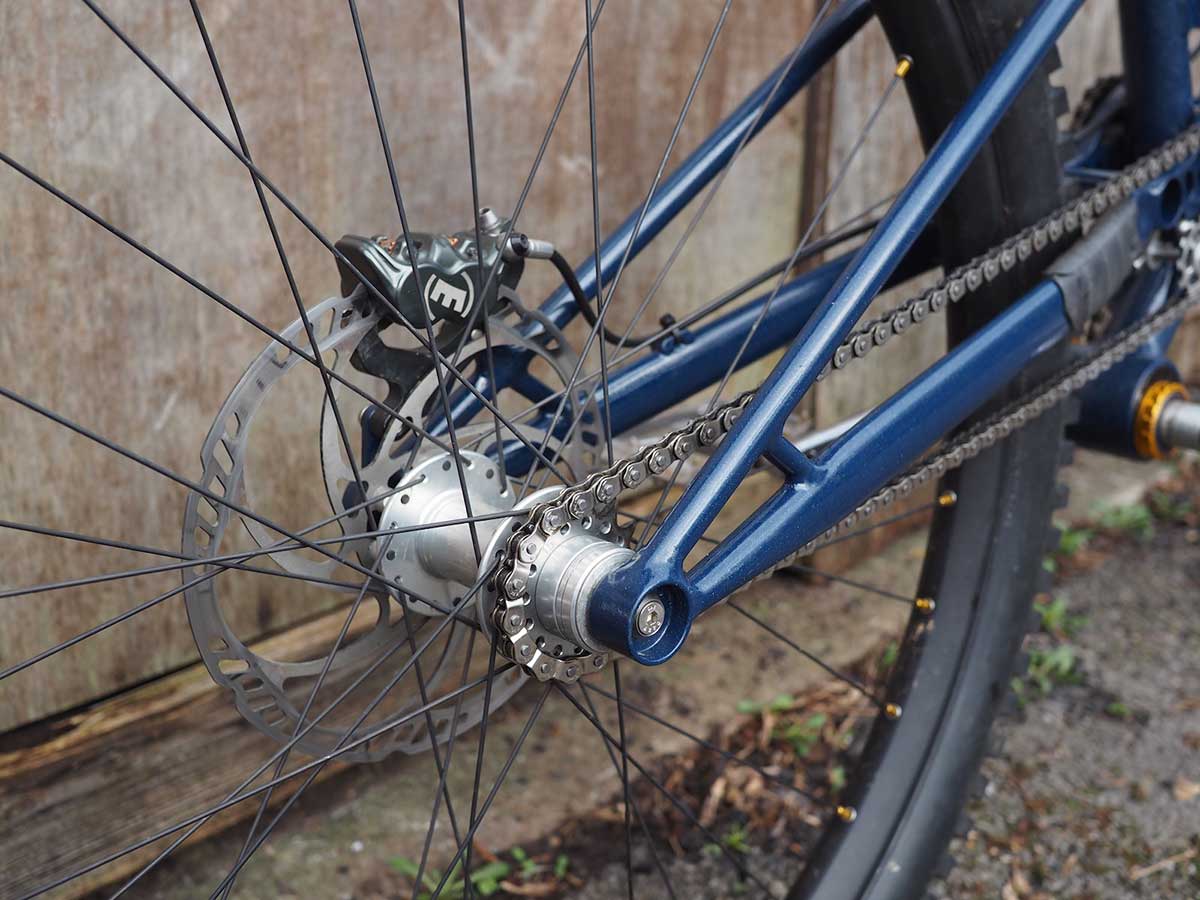
COMMENCAL: You can run your bike with less sag. The rear wheel path helps to soak up bumps, roots and rocks so it’s not necessary to get a soft setting. With a stiffer suspension you can get better dynamism.
ACTOFIVE: There’s no recipe for designing a high pivot. A balance is to be struck between ensuring a sensitive response behaviour through the rearward axle path, and a good level of agility. These two factors are in conflict with one another.
DH-oriented bikes have higher pivots to maximize the axle path into the rearward direction, while trail bikes need to be more agile, thus tend to have shorter chain stays, for example.
Another point to note is the anti-rise behaviour. With a single pivot system, the higher the pivot the more the anti-rise deviates from the optimum.
Compared to other bikes, the P-TRAIN has a medium pivot height.
Are high pivot suspension designs compatible with oval chain rings?
DEVIATE CYCLES: Yes, our design can work with oval chainrings.
FORBIDDEN BIKE CO: Yes, although the ring will need to be clocked to take into account the trajectory that the chain contacts the ring. This position will be different on different bikes and directly related to the position of the idler pulley. Some cranks (SRAM for example), however, do not allow the chainring to be clocked in different positions.
STARLING CYCLES: If you have a mech and an idler, yes, oval is fine. On my Jackshaft bikes, the chain changes length a tiny bit as it goes round the oval, which isn’t ideal.
COMMENCAL: To be honest, we haven’t tried an oval chain ring. We base our design on regular chain rings and I would stick to that.
ACTOFIVE: The high pivot suspension platform won’t work with common oval chain rings. However, if you were to rotate the oval shape 45 degrees, it would work. In contrast to traditional chain lines, the chain of a high pivot with idler pulley engages more from above.
Are high pivot suspension systems noisy? Can you hear the chain tracking over the idler when pedaling?
DEVIATE CYCLES: A well-designed idler system is neither draggy or noisy. We have spent the last 7 years developing our design and as a result of a huge learning process we’ve now got reliable, silent and stiff idlers that don’t require much maintenance.
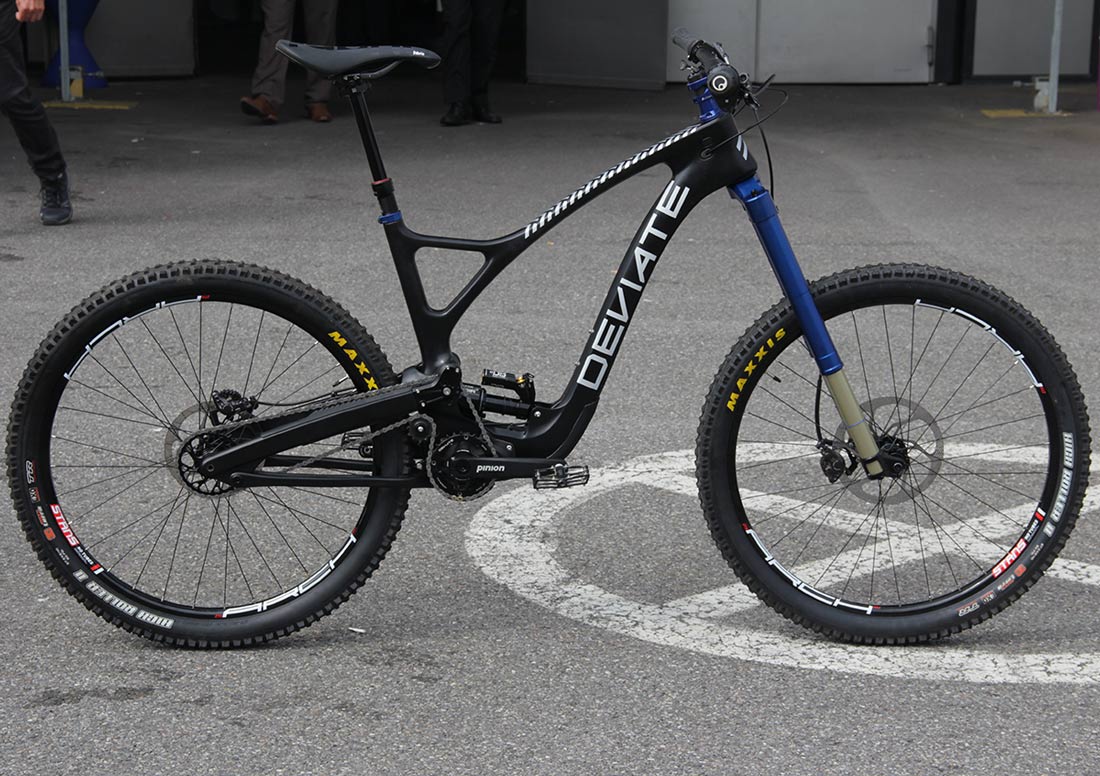
FORBIDDEN BIKE CO: This will depend on the design of the idler pulley teeth. On a well-designed system it shouldn’t be much noisier than a normal drivetrain. Often drivetrain noise is more due to system maintenance. A badly maintained drivetrain will make noise, with or without an idler pulley.
However, that point where any noise is generated (the idler pulley compared to chainring) is now closer to the rider’s ears, so they will hear a badly maintained system more.
STARLING CYCLES: This depends on how well the system is designed. I’ve tested alloy idlers and they were super noisy. A plastic one was pretty quiet. All Starling bikes are silent. To me this is a key design requirement, a noisy bike only detracts from you being able to concentrate and ride fast.
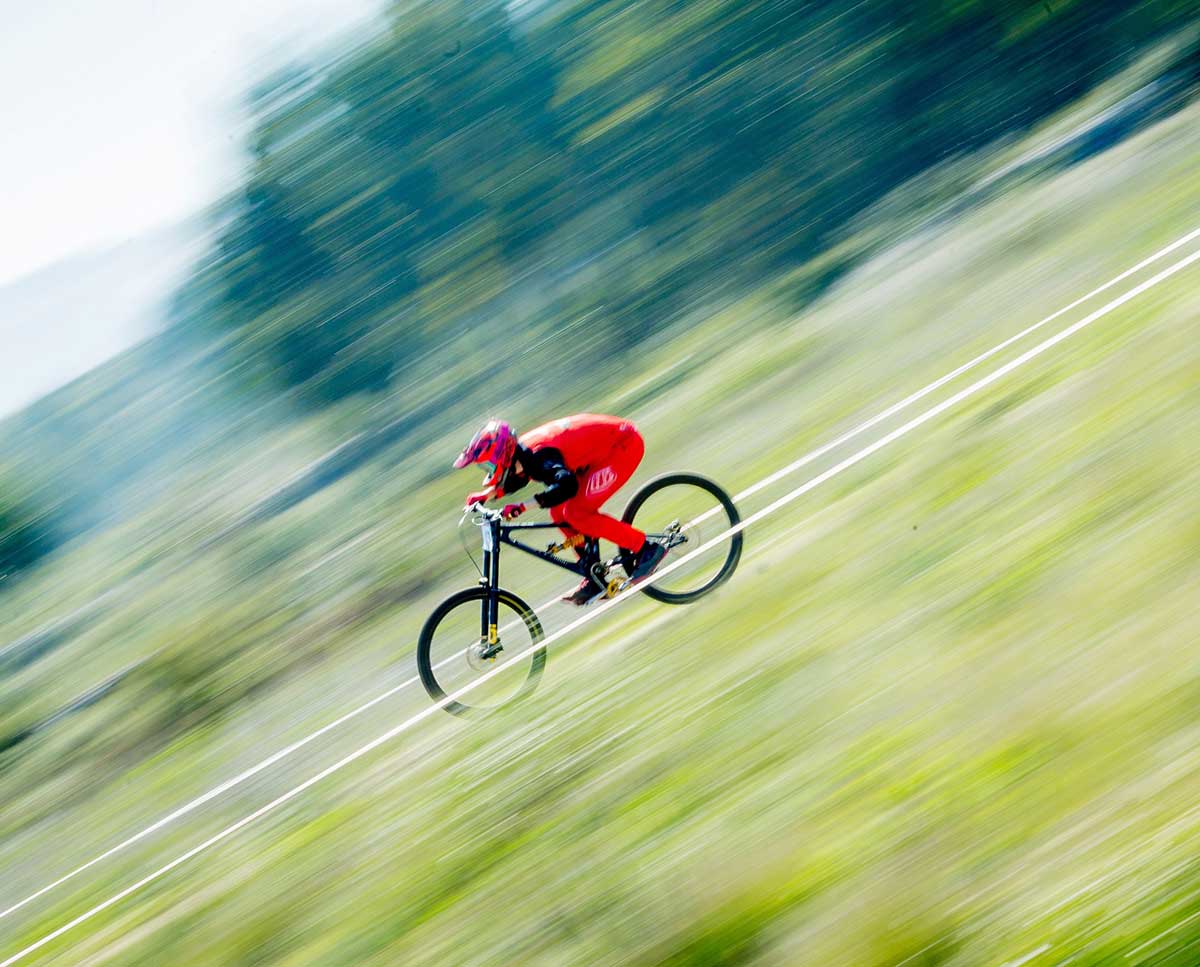
COMMENCAL: The idler has to be designed well to prevent noise. The shape of the teeth, the stiffness around the idler… in our case we have never experienced noises.
ACTOFIVE: The noise is minimal and only noticeable in higher gears with a diagonal run of the chain. In fact, it depends on the shape and the quantity of the idler teeth. Current idler pulleys are oriented towards chain rings in shape, geometry and material. Maybe there’s still potential for improvement.
Thank you to the following contributors for sharing their technical knowledge:
- Ben Jones of Deviate Cycles
- Owen Pemberton of Forbidden Bike Co – photos by Jarrett Lindal and Max McCulloch
- Joe McEwan of Starling Cycles – Photos by Miguel Guiabento, Dave Price and Andy Lloyd
- Nicolas Menard of Commencal
- Simon of Actofive Cycles- photos by @kilioreilly
Got a question of your own? Click here to use the AASQ form to submit questions on any cycling-related topic of your choice, and we’ll get the experts to answer them for you!

